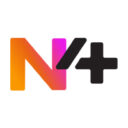Managing business data can be overwhelming, with information scattered across different systems and tools. Microsoft Fabric provides an all-in-one solution for integrating, analysing, and managing data efficiently. It brings together essential services to simplify data management, enhance decision-making, and improve operational efficiency.
What Is Microsoft Fabric?
Microsoft Fabric is a unified analytics platform. Instead of managing multiple tools and platforms, businesses can centralise everything within Fabric. Key features include:
- Centralised data storage
- Pipelines for data management
- High-performance analytics
- Data visualisation
- Real-time monitoring
- Automated machine learning
Each component is designed to work around your business and the skills within, ensuring that regardless of skill set, there is something for everyone and that you get a platform which scales.
“Data Factory can pull data from all areas of the business to provide a consolidated data solution which could help streamline order dispatching, delivery tracking, as well as route optimisation.”
Discover how teams automate reporting and empower decision-making with self-service BI.

How Can Fabric Support Your Business?
Centralised and Governed Data Management
You require a data repository that holds customer transactions securely, facilitates self-service for users, and provides consistent datasets to your business. Using OneLake provides a single unified data storage platform which can support integration with multiple systems. Thanks to Data Factory and Data Engineering workloads, curated datasets can be formulated, helping to improve services such as fraud detection and customer service.
Data-Driven Decision Making
Your employees are asking for self-service reports to help speed up weekly and month-end reporting needs. Presently, it is taking the business hours or days to formulate these reports, causing slowdowns across departments and taking away from what really matters, your customers!
The use of Power BI will help automate data visualisation and drive insight, promoting faster decision-making and reducing the time taken to build reports. For example, a retail business can use Power BI to track sales performance indicators, optimise inventory levels, and improve demand forecasting.
Automated Data Integration
Processing data from multiple systems can sound like a headache waiting to happen. But tools like Fabric’s Data Factory simplify ETL (Extract, Transform, Load) activities, reducing manual effort and improving data accuracy.
Thanks to recent Node4 enhancements, standard pipelines can be implemented to promote reusability and minimise administrative overhead. For example, a logistics organisation wanting to integrate GPS tracking, warehouse inventory, and order management can use Data Factory to consolidate data and streamline operations.
“Where Fabric can help with the use of AI and Machine Learning is helping to process this data to drive predictive insights, optimise workflows and enhance day-to-day operations.”
Real-Time Monitoring and Alerts
Increasingly, organisations are looking to AI as the answer to their data challenges. But off-the-shelf tools often falter when data isn’t in the right format or usable by AI models.
Microsoft Fabric helps process data to drive predictive insights, optimise workflows, and enhance operations. Clean data is critical, especially in sectors like healthcare, where AI can analyse patient data to predict health risks and enable early intervention.
Real-Time Intelligence
Batch loading data and seeing what happened hours ago is useful but knowing what’s happening now is critical. Real-time intelligence capabilities in Fabric help automate data alerts, drive operational responses, and improve business efficiency while reducing risk.
For example, a manufacturing operation can use Fabric to monitor equipment performance and proactively manage maintenance, identifying potential faults before they cause downtime.
“With security and compliance at the core of the product, data integrity and regulatory requirements can be maintained whilst remaining cost-efficient and reducing reliance on multiple software vendors.”
Summarising the Use-Cases
There are countless examples of how Microsoft Fabric can support your business. Think of it as a platform to resolve an infinite number of problems made easier because everything is in one place under one license.
Whether you’re looking to unify your data management tools, scale with your business, or strive toward AI-driven insights, there’s something for you in Microsoft Fabric. With security and compliance at its core, Fabric ensures data integrity and regulatory alignment while reducing reliance on multiple software vendors.
But Why Stop There?
You’re probably already on the edge of your seat, ready to start your journey but we want you shouting “Microsoft Fabric!” from the rooftops.
Yes, Microsoft Fabric is an excellent data platform but its ability to integrate seamlessly with business-as-usual systems is key. Whether you’re using Business Central, Dynamics 365, or other vendor solutions like Salesforce or HubSpot, Fabric can ingest these data sources easily in just a few clicks. Even better, it can all be achieved using low-code with the skills you have today.
“Microsoft Fabric is an excellent Data Platform, but the ability to integrate seamlessly with business-as-usual systems is key.”
Governance Made Easy
With native Microsoft Purview capabilities, you can bring all your governance into a single tool. Users in self-service roles can request access to datasets via Governance Domains, enabling data stewards to maintain sources ready for consumption and allowing users to access semantic models and other Fabric components.
Conclusion
Microsoft Fabric is designed to be a comprehensive solution for businesses looking to simplify data management, enhance analytics, and drive smarter decision-making. By integrating all aspects of data processing into one platform, Fabric helps businesses operate more efficiently and unlock new opportunities for growth.
With Microsoft’s ongoing development of Fabric, now is the time to modernise your data platform and start delivering even more business value.
